CVS Health says it is selling all 22 of its retail drugstores in Puerto Rico
Chatbot for Healthcare: Key Use Cases & Benefits
In the wake of stay-at-home orders issued in many countries and the cancellation of elective procedures and consultations, users and healthcare professionals can meet only in a virtual office. Recently the World Health Organization (WHO) partnered with Ratuken Viber, a messaging app, to develop an interactive chatbot that can provide accurate information about COVID-19 in multiple languages. With this conversational AI, WHO healthcare bot can reach up to 1 billion people across the globe in their native languages via mobile devices at any time of the day. As is the case with any custom mobile application development, the final cost will be determined by how advanced your chatbot application will end up being. For instance, implementing an AI engine with ML algorithms in a healthcare AI chatbot will put the price tag for development towards the higher end.
Chatbots must be regularly updated and maintained to ensure their accuracy and reliability. Healthcare providers can overcome this challenge by investing in a dedicated team to manage bots and ensure they are up-to-date with the latest healthcare information. Chatbots are a cost-effective alternative to hiring additional healthcare professionals, reducing costs. By automating routine tasks, AI bots can free up resources to be used in other areas of healthcare.
Thank you for your application!
Recently, Google Cloud launched an AI chatbot called Rapid Response Virtual Agent Program to provide information to users and answer their questions about coronavirus symptoms. Google has also expanded this opportunity for tech companies to allow them to use its open-source framework to develop AI chatbots. We built the chatbot as a progressive web app, rendering on desktop and mobile, that interacts with users, helping them identify their mental state, and recommending appropriate content. That chatbot helps customers maintain emotional health and improve their decision-making and goal-setting. Users add their emotions daily through chatbot interactions, answer a set of questions, and vote up or down on suggested articles, quotes, and other content.
The HIPAA Security Rule requires that you identify all the sources of PHI, including external sources, and all human, technical, and environmental threats to the safety of PHI in your company. The first step is to set up the virtual environment for your chatbot; and for this, you need to install a python module. Once this has been done, you can proceed with creating the structure for the chatbot. An effective UI aims to bring chatbot interactions to a natural conversation as close as possible.
Schedule appointments easily
These chatbots are data-driven, meaning they learn from patterns, conversations, and previous experiences to improve the quality of their responses. Thus, the more data the developer enters, the more complex discussions the chatbot will be able to handle in the future. So far, machine learning (ML) chatbots provide the most positive user experience as they are closest to reproducing the human experience of interaction. Leveraging chatbot for healthcare help to know what your patients think about your hospital, doctors, treatment, and overall experience through a simple, automated conversation flow. Information can be customized to the user’s needs, something that’s impossible to achieve when searching for COVID-19 data online via search engines.
In fact, the survey findings reveal that more than 82 percent of people keep their messaging notifications on. Patients can naturally interact with the bot using text or voice to find medical services and providers, schedule an appointment, check their eligibility, and troubleshoot common issues using FAQ for fast and accurate resolution. Forksy is the go-to digital nutritionist that helps you track your eating habits by giving recommendations about diet and caloric intake. Any chatbot you develop that aims to give medical advice should deeply consider the regulations that govern it.
Our team has developed an easy-to-use application with a wide range of functions, a web-based administrative panel, and a health and wellness application for Android and iOS platforms. That app allows users undergoing prostate cancer treatment to track and optimize their physical and mental health by storing and managing their medical records in the so-called health passport. Aside from connecting to patient management systems, the chatbot requires access to a database of responses, which it can pull and provide to patients.
The researchers specifically focused on tasks that could potentially be completed with computer vision, which is when systems use AI to recognize and analyze visual inputs, such as digital images and videos. The study researched the technical requirements and characteristics an AI model would need in order to complete a job at the level a human could. Then, researchers examined whether it makes economic sense for a company to pay for the development of that AI system and deploy it instead of a human worker. That’s because it may be too expensive for companies to replace human workers with AI, according to a January study from MIT CSAIL, MIT Sloan, The Productivity Institute and IBM’s Institute for Business Value. Utilize our pre-built, pre-trained, pre-integrated HIPAA-compliant virtual assistant so you can focus on increasing satisfaction, cost-savings, and revenue-driving opportunities.
What does the healthcare chatbots market and future look like?
The platform’s web version will enable them to shoot videos/photos using a webcam. Thus, responsible doctors monitor the patient’s health status online and give feedback on the correct exercise. Visitors can start a conversation with a specialist through the chatbot, calculate potential treatment costs, read the latest research, get special offers, and so on. While many patients appreciate the help of a human assistant, many others prefer to hold their information private. Chatbots are non-human and non-judgmental, allowing patients to feel more comfortable sharing sensitive medical details. After making a short scenario, the chatbot takes control of the conversation, asking clarifying questions to identify the disease.
Conversational chatbots use natural language processing (NLP) and natural language understanding (NLU), applications of AI that enable machines to understand human language and intent. Machine learning applications are beginning to transform patient care as we know it. Although still in its early stages, chatbots will not only improve care delivery, but they will also lead to significant healthcare cost savings and improved patient care outcomes in the near future. Chatbot algorithms are trained on massive healthcare data, including disease symptoms, diagnostics, markers, and available treatments. Public datasets are used to continuously train chatbots, such as COVIDx for COVID-19 diagnosis, and Wisconsin Breast Cancer Diagnosis (WBCD).
Best Platform for Creating Healthcare Chatbots
Healthcare payers and providers, including medical assistants, are also beginning to leverage these AI-enabled tools to simplify patient care and cut unnecessary costs. Whenever a patient strikes up a conversation with a medical representative who may sound human but underneath is an intelligent conversational machine — we see a healthcare chatbot in the medical field in action. However, healthcare data is often stored in disparate systems that are not integrated. Healthcare providers can overcome this challenge by investing in data integration technologies that allow chatbots to access patient data in real-time. Whether it’s customized telemedicine software, custom healthcare solutions, or HIPAA-compliant chatbots, Jelvix developers have the best experience to help you with everything technology related!
Leave a Comment

